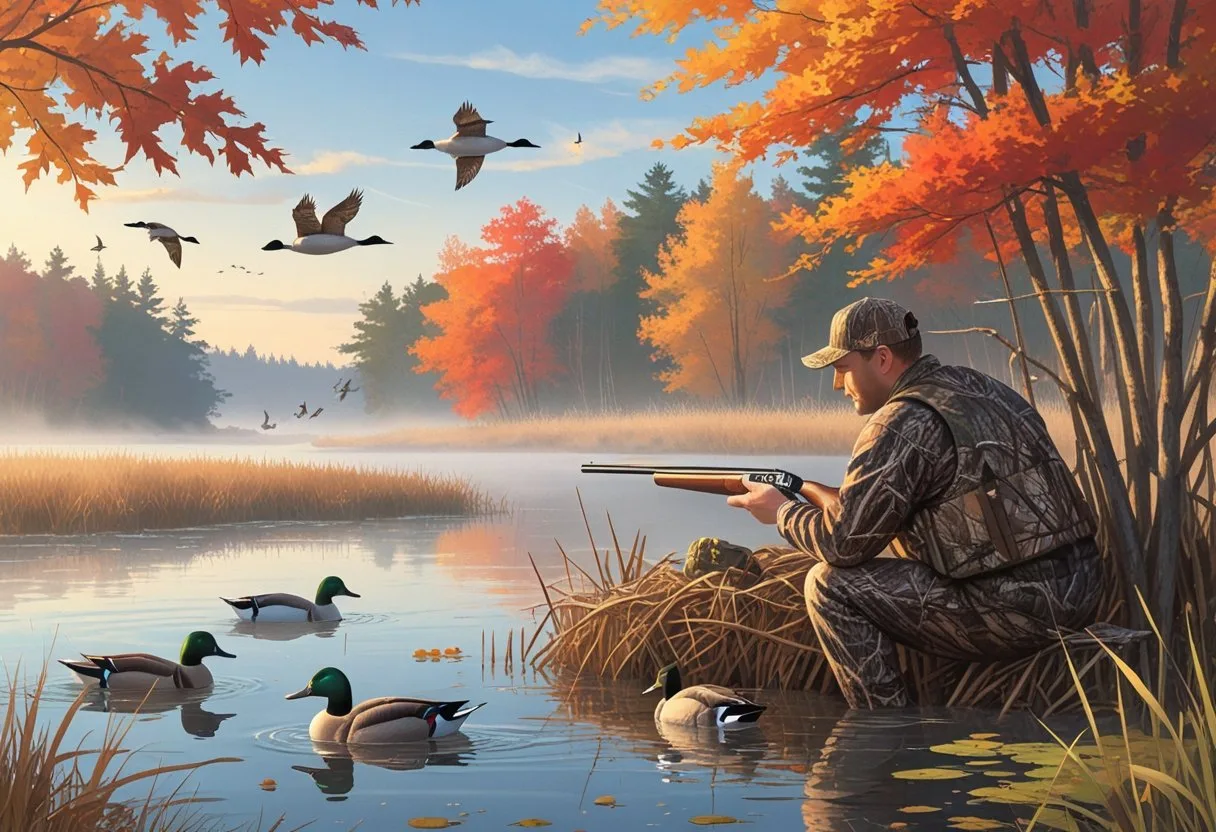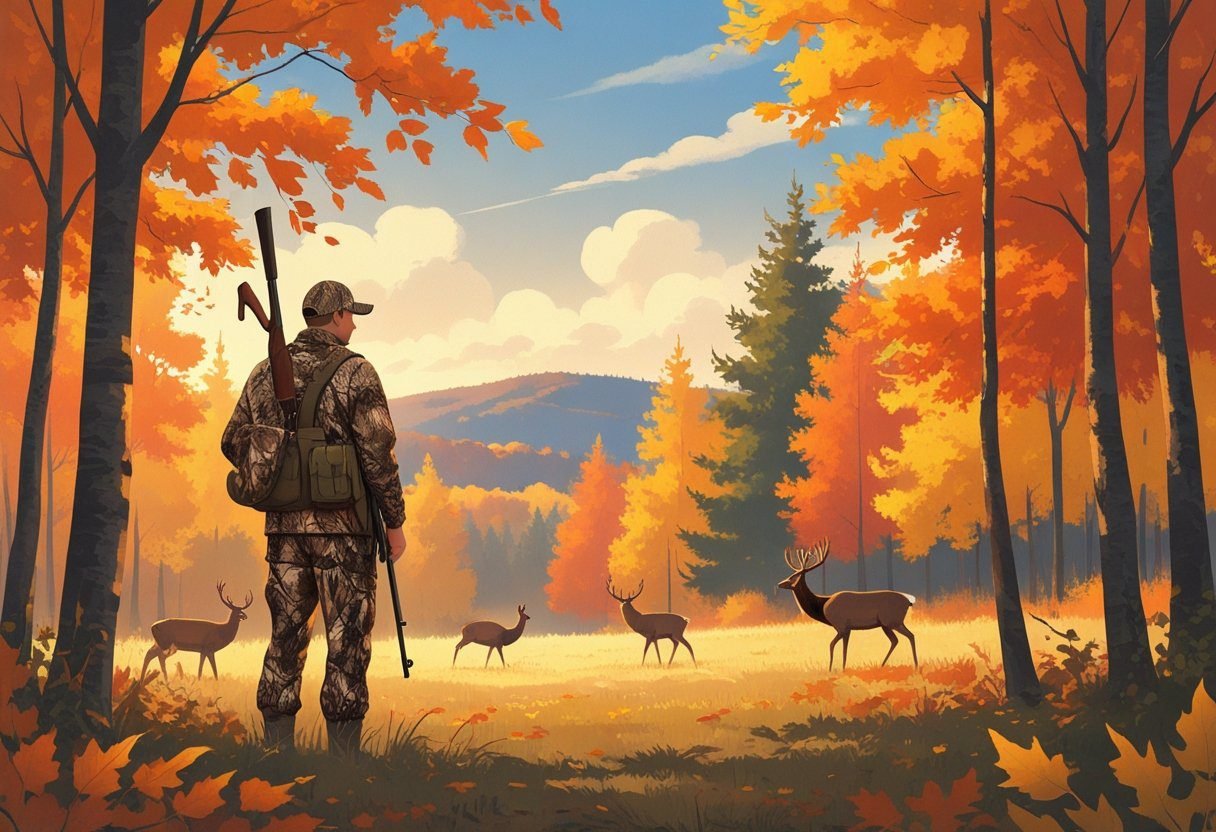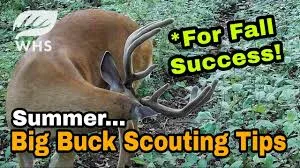Thanksgiving hunting in Canada on the long weekend opens up incredible hunting opportunities that many of us look forward to all year. The Canadian Thanksgiving holiday in October lines up with prime hunting season, giving us excellent chances to harvest waterfowl, upland birds, and big game across the country.
This timing creates a perfect storm of favorable conditions that we can take advantage of.
The crisp autumn air and migrating birds make this one of our most productive hunting periods. We get to combine family traditions with outdoor adventures during this special weekend.
Many provinces have specific seasons that align perfectly with the holiday, giving us extended time in the field.
Whether we’re seasoned hunters or just getting started, Thanksgiving weekend provides us with prime hunting conditions and memorable experiences.
The combination of cooler weather, active wildlife, and extra time off work makes this weekend a highlight of our hunting calendar.
Key Takeaways
- Canadian Thanksgiving weekend offers prime hunting opportunities during peak migration and breeding seasons
- Understanding provincial regulations and seasonal timing is essential for successful and legal hunting during the holiday
- Waterfowl hunting reaches its peak during this period with optimal weather conditions and bird movement patterns
Thanksgiving Hunting Traditions and Regulations in Canada
Canadian hunters love the Thanksgiving weekend when waterfowl seasons align with fall migration patterns. Licensing requirements vary a lot across provinces, and each region offers unique hunting experiences—from prairie pothole waterfowl to Atlantic Canada geese.
Key Dates and Season Overview
We’re in for incredible hunting during Canada’s Thanksgiving weekend! The holiday falls on the second Monday in October, which coincides beautifully with peak waterfowl migration.
Waterfowl season dates vary by province:
- Ontario: Early October through late December
- Manitoba: September through November
- Alberta: September through December
- Saskatchewan: September through mid-December
Canada geese hunting reaches its peak during this time. We see massive flocks moving south through major flyways.
Duck species like mallards, pintails, and teal are most active during morning and evening feeds. Weather changes around Thanksgiving often trigger major bird movements.
Licensing and Permits
We need several permits before heading out for our Thanksgiving hunt. Every waterfowl hunter requires a valid hunting license from their province.
Required documents include:
- Provincial hunting license
- Federal Migratory Bird Hunting Permit
- Canadian Wildlife Habitat Conservation Stamp
- Hunter safety certificate
First Nations hunters have special treaty rights that affect licensing. Misipawistik Cree Nation asks court to cancel some 2025 Manitoba moose hunting licences shows how Indigenous hunting rights remain protected.
We must purchase licenses before the season opens. Online systems make this easier than ever.
Regional Rules and Popular Locations
We follow strict bag limits that change by species and location. Daily limits for Canada geese typically range from 5-8 birds depending on the province.
Top waterfowl hunting regions:
- Prairie Provinces: Massive duck and geese populations
- Ontario: Great Lakes flyways
- Quebec: St. Lawrence River corridor
- Maritime Provinces: Atlantic flyway birds
Each province sets specific season dates and bag limits. We always check current regulations before hunting.
Shooting hours run from 30 minutes before sunrise to sunset. Non-toxic shot is mandatory for all waterfowl hunting across Canada.
We need written permission to hunt on private land. Crown land offers excellent public hunting opportunities in most provinces.
Essential Strategies and Expert Tips for Waterfowl Success

Smart scouting leads us to the best hunting spots. Proper decoy setup and blind placement make the difference between empty skies and successful harvests.
These proven methods work for both ducks and geese during Canada’s October hunting season.
Scouting and Choosing Productive Fields – Thanksgiving Hunting in Canada
We need to start scouting at least one week before our hunt. Early morning and late afternoon give us the best view of where birds are feeding.
Look for fields with standing grain or fresh stubble. Corn, wheat, and barley fields attract the most waterfowl.
Fresh goose droppings tell us birds visited recently. Water sources make fields even better.
We should find spots within 200 yards of ponds, creeks, or sloughs. Birds feel safer when they can reach water quickly.
Key scouting signs to watch for:
- Fresh feathers stuck on fence posts
- Feeding holes in mud or soft ground
- Flight patterns at dawn and dusk
- Large flocks circling specific areas
We can use apps like onX Hunt to mark productive spots on our phones. This helps us remember exact locations and wind directions.
Decoy Selection and Effective Setup – Thanksgiving Hunting in Canada
Our decoy spread makes or breaks the hunt. We need at least 2-3 dozen decoys for waterfowl hunting in open fields.
Mix different postures in our spread. Use 60% feeding decoys, 30% alert heads, and 10% resting birds.
This looks natural to passing flocks. Decoy types that work best:
- Full-body goose decoys for realism
- Shell decoys for easy transport
- Motion decoys for windy days
- Mallard hen decoys as confidence birds
Space our decoys 2-3 feet apart. Tight groups look nervous to real birds.
Create small family groups with gaps between them. Face most decoys into the wind.
This matches how real birds land and feed. Leave a landing zone downwind of our spread.
Add movement with spinning wing decoys or flag poles. Motion catches attention from long distances.
We should use these sparingly on calm days.
Blind Placement and Camouflage Techniques
We must set up our blind before sunrise. Birds start flying early and will avoid areas where they see movement.
Position blinds 15-20 yards downwind from our decoy spread. This puts incoming birds in easy range.
Never set up directly in the landing zone. Blind setup checklist:
- Clear shooting lanes in all directions
- Remove shiny objects from gear
- Test our range to key decoy positions
- Practice smooth gun mounts
Natural cover works better than manufactured blinds. We can use corn stalks, cattails, or brush from the area.
This blends perfectly with surroundings. Layout blinds work great in short stubble fields.
We stay completely hidden until birds commit. Dig shallow depressions to lie flat and comfortable.
Face paint or masks hide our skin. Even small reflections spook smart birds.
Keep movements slow and minimal when birds circle overhead.
Species Spotlight: Mallards and Merganser
Mallards respond to loud, aggressive calling during early season. We should use feeding chuckles and comeback calls to grab their attention.
These birds decoy easily to realistic spreads. Use mostly hen mallard decoys with a few drakes mixed in.
Mallards like calm water areas near grain fields. Look for mallards in shallow marshes and flooded timber.
They feed heavily on waste grain during October migration. Groups often include 5-15 birds.
Mergansers present different challenges. These fish-eating ducks prefer deeper water and moving currents.
We rarely see them in grain fields. Target mergansers near rocky shorelines and river mouths.
They dive for small fish and rarely decoy to standard duck spreads. Pass shooting works better than decoying.
Red-breasted mergansers arrive first during fall migration. Common mergansers show up later in colder weather.
Both species fly fast and low over water.
Frequently Asked Questions – Thanksgiving Hunting in Canada

Turkey hunting seasons vary by province, with most opening in spring and fall. Special permits and licenses are required across Canada, and bag limits differ by region to ensure sustainable hunting practices.
What’s the start of the turkey hunting season this year? Can’t wait to plan my trip!
Turkey hunting seasons depend on which province we’re visiting! Most provinces have spring seasons that run from late April through May.
Fall seasons typically start in October and can extend into November. Ontario offers both spring and fall turkey hunting.
The spring season usually opens around the last week of April. The fall season often begins in early October, perfect timing for our Thanksgiving hunting adventures.
We need to check specific provincial regulations since dates can change each year. Each province sets its own calendar based on turkey populations and breeding cycles.
Are there any special Thanksgiving hunting events or contests in Canada this season?
Many hunting clubs and outfitters organize special Thanksgiving weekend events! These often include group hunts, turkey calling contests, and harvest competitions.
Provincial wildlife associations sometimes host turkey hunting workshops during fall seasons. These events help us improve our calling techniques and learn about turkey behavior.
Local hunting stores frequently run contests for the biggest turkey harvested during Thanksgiving week. We can check with regional hunting retailers for current promotions and events.
What are the bag limits for turkeys in Canada? Hope it’s a plentiful year!
Bag limits vary significantly between provinces and hunting zones. Most provinces allow one turkey per hunter during spring seasons.
Fall limits are often more restrictive. Ontario typically permits one bearded turkey during spring season.
Fall seasons may have different restrictions, sometimes allowing hen turkeys as well. We must purchase turkey tags in advance in most provinces.
These tags are often limited in number and can sell out quickly for popular hunting areas. For more info on waterfowl, check out our waterfowl hunting tips and top hunting spots guides.
Do I need any special permits or licenses for Thanksgiving hunting in Canada? Super excited to stay within the rules!
Yeah, you’ll need proper hunting licenses and turkey tags. Every province asks for a valid hunting license, plus extra turkey hunting authorization.
Most provinces also want you to have hunter education certification first. If you haven’t finished a safety course, you’ll need to do that before applying.
Turkey tags aren’t included with your basic hunting license. You have to buy them separately, and in some popular hunting zones, they’re given out by lottery.
If you’re curious about more hunting rules or want to dig into how lotteries work, check out our Canada hunting regulations guide.
Are there guided hunting tours for Thanksgiving in Canada? It would be amazing to have an expert guide!
Guided turkey hunting tours pop up all over Canada, especially around Thanksgiving. Professional outfitters usually offer packages with guides, equipment, and sometimes even a cozy place to stay.
Some guides really know their stuff and can show you the best calling spots. They’ll teach you advanced techniques while you explore prime locations.
Thanksgiving weekend gets busy fast—tour spots fill up early. It’s a good idea to book your guided hunt well ahead of time if you want your pick of dates.
For more tips on booking outdoor adventures, swing by our Canada outdoor trips page.
What hunting equipment is recommended for a Thanksgiving hunt in Canada? Looking forward to gearing up!
We’ll definitely want proper hunting clothing in camouflage. Try to match those patterns with the fall foliage—turkeys notice everything.
Turkey hunting is all about staying hidden. Their eyesight’s almost unfair, honestly.
You’ll need a reliable shotgun with turkey loads. Most folks go for a 12-gauge, usually with a modified or full choke tube for that extra reach and punch.
Don’t forget turkey calls. Box calls, slate calls, and diaphragm calls all make different sounds, so it’s worth experimenting to see what works best in the moment.
For more tips and gear advice, check out our beginner’s turkey hunting guide and browse our other hunting articles for inspiration.





![“Legal Crossbow Hunting Zones in Quebec 🏹 [2025 Map & Rules Guide]” “Legal Crossbow Hunting Zones in Quebec 🏹 [2025 Map & Rules Guide]”](https://northhuntfishclub.com/wp-content/uploads/2025/09/Untitled-350x250.jpg)

















